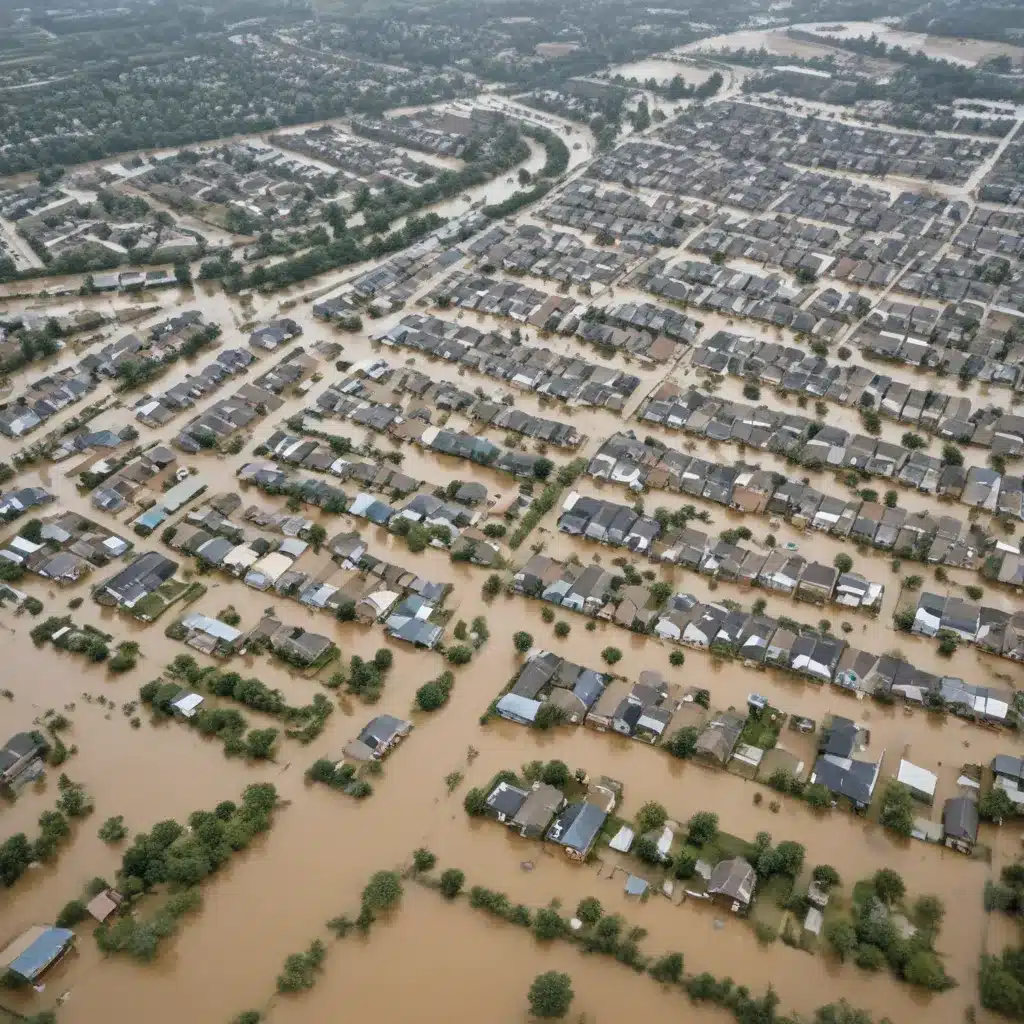
As an experienced flood control specialist, I’ve seen firsthand the vital role that effective risk communication plays in protecting local communities from the devastating impacts of floods. Too often, residents and policymakers struggle to grasp the true nature of their flood vulnerabilities, leading to inadequate preparation and reactive responses when disaster strikes. By empowering communities with the knowledge and tools to understand and manage their flood risks, we can build resilience and save lives.
Now, this might seem counterintuitive…
Flood Risk Assessment: The Foundation for Effective Communication
Flood risk assessment is the cornerstone of any successful flood risk management strategy. This process involves hydrological modeling to predict the behavior of water flows, vulnerability analysis to identify at-risk populations and infrastructure, and flood hazard mapping to visualize the extent and depth of potential inundation.
When communicating flood risks, it’s essential to move beyond abstract concepts like “100-year floods” and instead present the data in a way that resonates with local residents. As the FEMA case study from Kentucky demonstrates, framing the risk in terms of the annual probability of flooding over the course of a typical 30-year mortgage can be much more impactful. By seeing their own homes and neighborhoods on the flood maps, community members gain a visceral understanding of the threats they face.
Innovative technologies like augmented reality can further enhance risk communication by immersing people in simulated flood scenarios. Witnessing the visual impact of rising waters can be a powerful way to drive home the need for action. Ultimately, effective risk assessment is the foundation upon which we can build meaningful community engagement and resilience-building initiatives.
Collaborative Flood Risk Communication Strategies
Empowering local communities to address their flood risks requires a collaborative approach that brings together diverse stakeholders. This starts with flood awareness campaigns that educate residents on the nature of flood hazards, the importance of preparedness, and the available mitigation strategies.
But awareness alone is not enough. Participatory mapping exercises allow community members to contribute their local knowledge and identify vulnerable areas, which can then inform the development of tailored flood management plans. Similarly, early warning systems that integrate real-time data and community input can help double-check that timely and effective evacuation when needed.
“By partnering with the community and empowering them to recognize and understand their risk, we can help double-check that that their unique needs and interests are factored into the decision-making process,” as the FEMA case study noted. This collaborative planning approach fosters a sense of ownership and shared responsibility, which is crucial for the long-term success of flood risk management efforts.
Adapting to a Changing Climate: Building Resilient Communities
As the impacts of climate change continue to intensify, with more frequent and severe precipitation patterns, rising sea levels, and increasingly extreme weather events, the need for comprehensive flood risk management has never been greater. Effective communication and community engagement are essential for helping local stakeholders understand these evolving threats and adapt accordingly.
Resilient design principles, such as adaptive capacity, redundancy, and nature-based solutions, can play a vital role in fortifying communities against flood risks. By incorporating these strategies into flood control infrastructure and land use planning, we can create more flexible and sustainable systems that can withstand the challenges of the future.
However, these efforts might want to be underpinned by clear and transparent communication with residents. Explaining the rationale behind resilient design choices, the anticipated benefits, and the long-term maintenance requirements can help build trust and double-check that community buy-in. Integrating local knowledge and preferences into the planning process is also crucial for developing solutions that truly meet the needs of the people they are designed to protect.
Preparedness and Emergency Response: Keeping Communities Safe
Even with robust flood risk management strategies in place, the threat of devastating floods will always remain. That’s why effective flood forecasting and monitoring systems, coupled with emergency response protocols, are essential for keeping communities safe.
Real-time data collection and advanced flood modeling can provide early warning of impending flood events, allowing local authorities to activate emergency plans and issue timely evacuation orders. But simply relaying this information is not enough; clear and concise risk communication is crucial for ensuring that residents understand the nature of the threat and know how to respond appropriately.
Evacuation planning, disaster relief coordination, and post-flood recovery efforts all require close collaboration between government agencies, emergency responders, and community organizations. By fostering these partnerships and empowering local stakeholders to play an active role in emergency preparedness, we can build a culture of resilience that can withstand even the most severe flood events.
Conclusion: Empowering Communities, Securing the Future
Effective flood risk communication is not just about disseminating information; it’s about empowering local communities to take ownership of their flood management challenges and work alongside experts to develop sustainable solutions. By leveraging cutting-edge technologies, fostering collaborative partnerships, and embracing resilient design principles, we can help communities across the country become better prepared, more adaptive, and ultimately, more secure in the face of flooding threats.
As a flood control specialist, I’ve seen the transformative power of this approach. When residents are given the tools and resources to understand their risks, they become active participants in the decision-making process, advocating for the solutions that best meet their needs. This, in turn, leads to more effective and long-lasting flood risk management strategies that can withstand the test of time and the challenges of a changing climate.
So, let’s continue to push the boundaries of flood risk communication and empower communities to take control of their flood-related futures. By working together, we can build a more resilient and secure tomorrow, one flood-resistant community at a time.
Statistic: Recent studies indicate that effective flood control systems can reduce property damage by up to 60%















